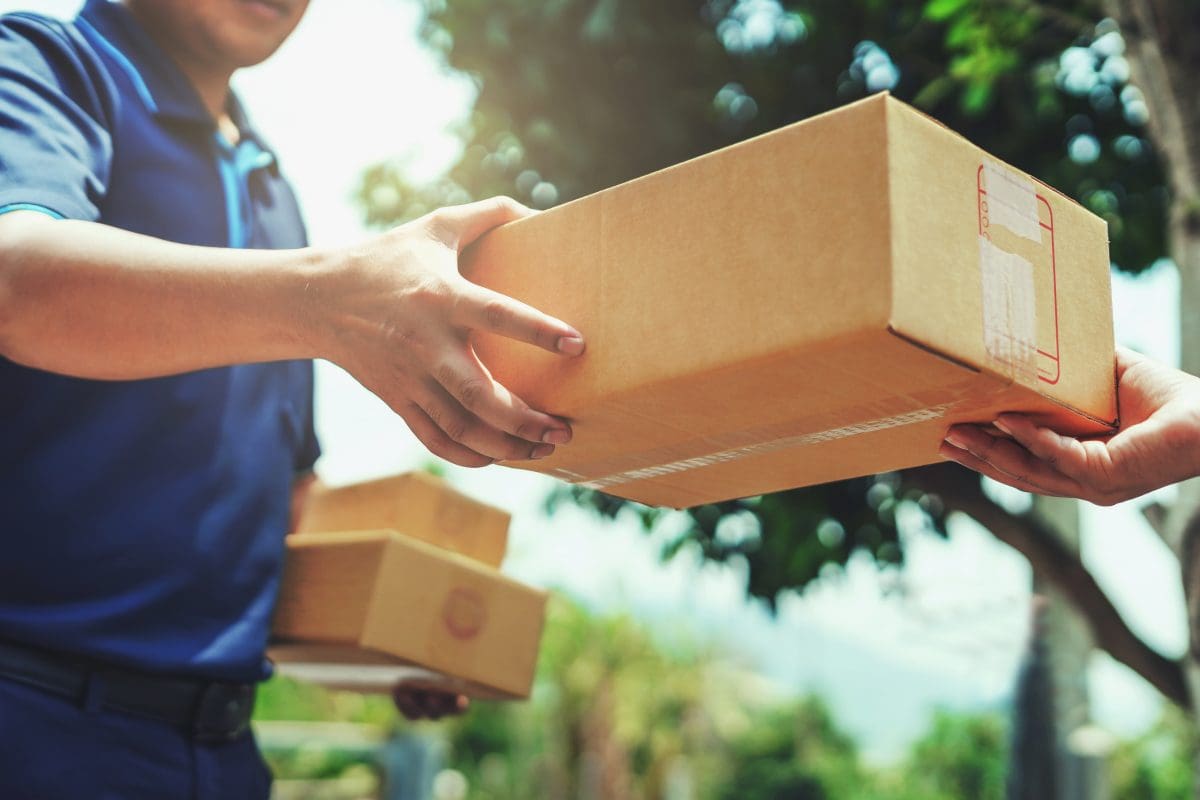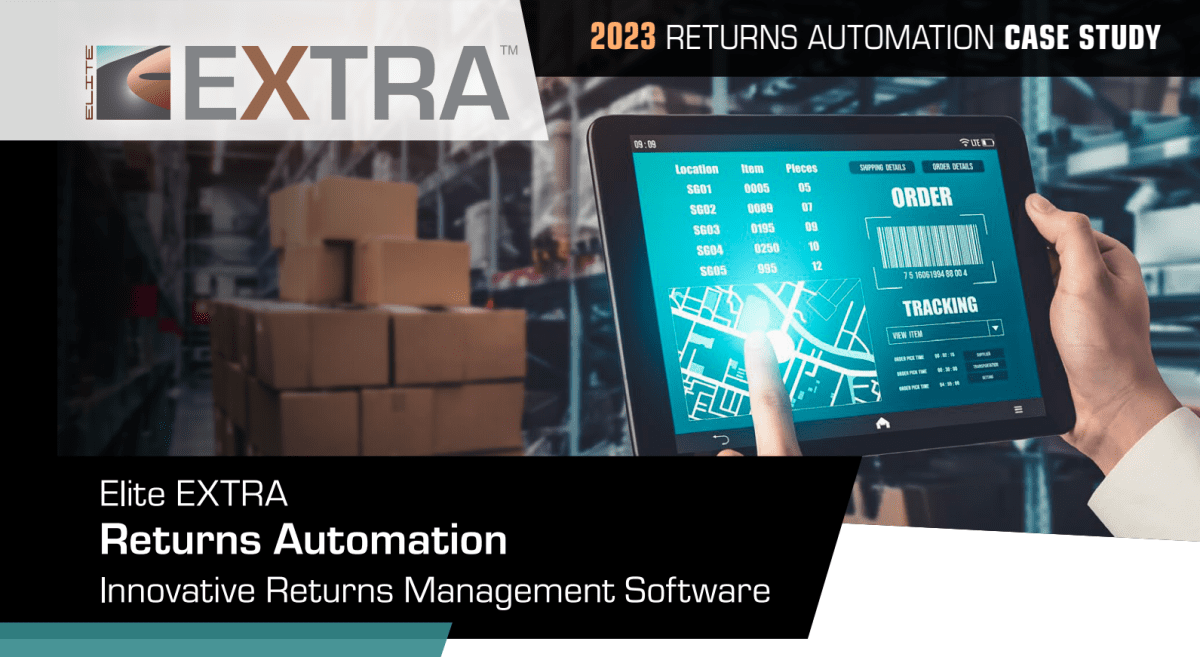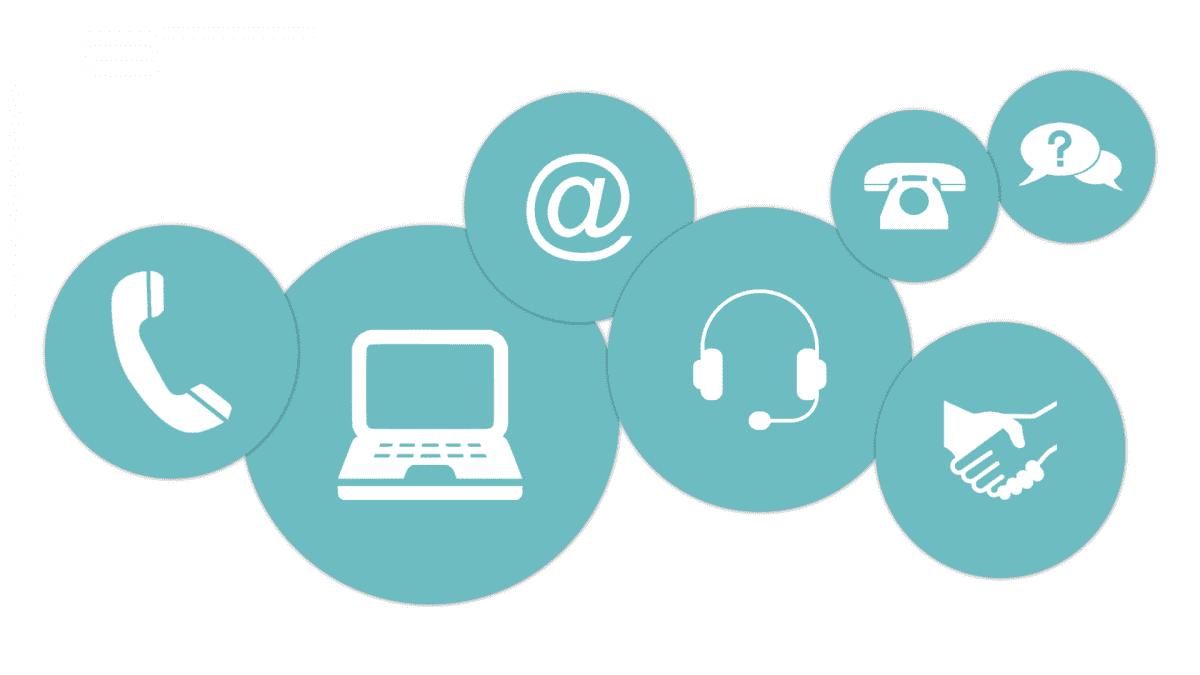
What is returns management and why is it essential to your business’s operations? Well, creating an efficient product returns management process is crucial to your success for a few reasons. Let’s break it down.
Product returns are an inevitable part of doing business—especially in eCommerce. In fact, Statista reports that around 16.5% of all online purchases are returned, amounting to $817 billion in merchandise. Some estimates even place that number closer to 30%, depending on the industry.
That’s a massive financial burden. But the impact of poor returns management goes far beyond the bottom line. Customers dislike returns just as much as businesses do, and a frustrating return experience can quickly turn into a lost customer. Mismanaging returns can damage your brand, reduce repeat purchases, and make an already costly problem even worse.
That’s why having a clear, efficient product returns management process isn’t just helpful—it’s essential.
In this article, we’ll start with the basics: what returns management is, how it works, and why it matters. Then we’ll dive into actionable strategies for improving your returns process to reduce costs, retain customers, and stay competitive in today’s return-heavy retail environment.
Want a quick overview? Our table of contents will help you find exactly what you’re looking for:
- What is Returns Management?
- Complete Overview of the Returns Management Process
- The Cost of Returns
- Product Management Challenges & Benefits
- FAQs
- #1 Returns Management Solution
What is Returns Management?
Returns management is the process of verifying, collecting, organizing, and restocking products returned by customers after purchase and delivery. It’s an integral part of any retail or eCommerce business that affects the supply chain, including essential business operations such as customer support and inventory management. That’s why product returns can cause logistical problems that can disrupt or derail these and other operations.
Product Returns Management vs. Reverse Logistics
Product returns management is focused on getting items back to the seller when customers want to return or exchange them. Reverse logistics is a larger process that includes product returns management but isn’t limited to just that. Reverse logistics also encompasses product recalls, end-of-lifecycle processes, and getting products back up the supply chain after the business receives the returned item.
Controllable vs Uncontrollable Returns
No matter how hard you try, you can’t control everything. It’s important to understand the difference between the returns you can control and those you can’t. Here are the main differences:
Controllable Returns
Controllable returns are returns made due to an error in your process or returns that you can prevent by doing something.
Examples of Controllable Returns:
- Incorrect orders packaged and delivered
- Defective products
- Products damaged during shipping
- Products that don’t match the images/descriptions provided
- Products that don’t perform as claimed
Uncontrollable Returns
Uncontrollable returns are returns due to reasons that have nothing to do with you that you have no way to prevent.
Examples of Uncontrollable Returns:
- Customers changing their minds
- Getting a similar product as a gift
- Other reasons the product is no longer needed
Only focus your attention on the factors you can control– after all, nothing you do will stop someone’s Aunt Suzie from buying them the same product they already have. By concentrating on your product quality, order management, and efficient delivery operations, you can minimize the returns within your control. It’s more profitable and a lot less stressful!
However, that isn’t to say uncontrollable returns should be ignored. Quite the opposite! Instead of trying to prevent them (which will drive you mad) you should focus on a positive returns experience for the customer. This will help your operations run more smoothly, keep customer inquiries low, and boost customer satisfaction, even if you didn’t land the sale.
Industries that Commonly Use Returns Management
Product returns are common for many product categories across various industries, including:
- Automotive manufacturing
- Fashion and beauty
- Electronics and electric appliances
- Groceries (food and other edibles)
- Home and gardening products
Overall, any business or industry that sells tangible products are highly likely to deal with product returns. It’s also worth noting that product return rates are higher for eCommerce businesses than for brick-and-mortar businesses.
Dive deeper into the world of returns by downloading our latest white papers for free!

Case Study: Early Adopters of Returns Automation
This in-depth case study analysis explores how Elite EXTRA Returns Automation has improved returns operations for numerous early adopters!

White Paper: The Reverse Logistics Hassle
Discover the challenges involved with last mile product returns and learn how you can solve the reverse logistics hassle.
A Step-by-Step Overview of the Returns Management Process
The returns management process is an integral aspect of reverse logistics. While different businesses have varying ways of managing product returns, there are some general commonalities seen more or less across the board. Here is a step-by-step overview of the returns management process:
1. Return Request
The customer initiates the process when they file a product return request. You can make this step as simple as possible for them by having your return portal in an easily accessible location with clear instructions. Need help creating a return policy? Here are the top four things you should be sure to include in your return policy. Note: customers will also request an exchange or refund at this time, depending on your policy.
2. Customer’s Return Request Evaluation
Your business then takes over the process by evaluating the customer’s product return request. Depending on the company’s product returns policy, you can approve or reject the customer’s product return request.
3. Product Collection
The next step entails picking up the returned product from the customer’s original delivery address or providing them with a return label so they can send it back. It is also worth noting that you can hire third-party logistics providers for product pickups and deliveries.
4. Product Delivery & Inspection
Next, the delivery drivers bring the returned products to your business’s warehouse (or another sorting facility). This step is the most important, as it also entails inspecting the product for quality defects.
Ideally, the inspection should reveal the customer’s reason for returning the product, how and when it was damaged (during delivery or returns), and whether it is good enough to restock. Defects and damages account for about 20% of all product returns.
There are many other, less clear-cut reasons for returns like the product not being what they expected, clothing that doesn’t fit, they no longer need it, or they just didn’t like it. How these situations are handled will depend on the return policy of the business.
5. Product Restocking & Processing
Finally, you can restock the returned product and add it to the inventory count if it’s still in good condition. Alternatively, you can return defective products for processing.
The Cost of Returns
You already know that 16% to 30% of eCommerce products are returned and that the combined value of those products is over $800 billion. However, even more staggering is the fact that by the time a return is processed and ready to be resold, it’s already lost 65% of its value.
When you account for the average cost of processing a return, most businesses are spending more on a return (17% of the sale price) than they make on each sale in profit (10%). So, you’re likely losing 7% more when a customer returns an item than you’d make if they kept it. Plus, you can’t even sell it for half of what it was worth the first time.
The point? Returns are like a poison pill that every business is forced to swallow. However, with the right product returns management software, you can keep the dosage low enough to ensure that eating the cost of returns doesn’t kill your business.
Product Returns Management Challenges
Delivery is never easy—and managing product returns presents its own set of hurdles. Whether you’re dealing with high volumes, complex logistics, or evolving customer expectations, the process can get messy fast. Do any of these common challenges sound familiar?
Key Challenges in Returns Management
1. High Costs
Returns aren’t just inconvenient—they’re expensive. Every returned item brings additional shipping, handling, restocking, and sometimes refurbishment costs. If not managed efficiently, these expenses can quickly eat into your profit margins and impact overall operational efficiency.
2. Operational Complexity
Returns management is often more complex than outbound logistics. It involves reverse logistics, inventory updates, quality checks, customer communication, and possible resale or disposal. Without a streamlined process, things can fall through the cracks—and fast.
3. System Compatibility
Your returns process must integrate seamlessly with your existing systems, including inventory management, customer relationship management (CRM), and order fulfillment platforms. If these systems don’t “talk” to each other, it can lead to delays, errors, and customer frustration.
4. Data Management and Analysis
Managing returns effectively means knowing why they’re happening. This requires collecting accurate data, analyzing return reasons, and identifying trends—whether it’s product defects, sizing issues, or customer abuse. Turning this data into actionable insights is key to reducing future return rates.
5. Customer Expectations
Customers expect returns to be quick, hassle-free, and ideally free of charge. A confusing or time-consuming process can damage your brand’s reputation and decrease the likelihood of future purchases. Today, your return policy is part of your customer experience—and customers are paying attention.
6. Return Fraud
From wardrobing to fake receipts to empty box scams, fraudulent returns are a growing concern. Businesses need smart tools and policies in place to distinguish between honest customers and scammers, or risk losing revenue to bad actors.
Yes, managing returns involves a lot of moving parts—and it can be a major headache. But with the right systems, strategies, and tools in place, it becomes far more manageable. More importantly, a well-run returns process can reduce costs, build customer loyalty, and give you a competitive edge.

Benefits of a Streamlined Returns Management Process
An optimized returns process doesn’t just solve problems—it unlocks value. When you streamline your returns management, both your business and your customers benefit. That, in turn, fuels long-term growth, stronger loyalty, and a more resilient operation.
Why Better Returns Management Pays Off
1. Reduced Costs
Returns are expensive—but inefficient returns are even more costly. A streamlined process minimizes wasteful spending by improving routing, reducing manual work, and cutting down on restocking and processing delays. It helps you recover more value from returned items and eliminate unnecessary overhead.
2. Higher Customer Satisfaction & Loyalty
Today’s customers expect convenience, especially when it comes to returns. A seamless, hassle-free experience builds trust, increases satisfaction, and encourages repeat business. Get it right, and your returns policy becomes a competitive advantage—not a liability.
3. Improved Product Quality
Returns data is a goldmine for product improvement. When you track return reasons effectively, you gain insights into product defects, sizing issues, or unmet expectations. Use this feedback to refine your offerings, reduce return rates, and better align products with customer needs.
4. Enhanced Sustainability
A smart returns process can reduce your environmental impact. Reusable packaging, consolidated reverse logistics, and sustainable handling of non-resellable items (like recycling or refurbishment) all contribute to a greener operation—something customers increasingly care about.
In short, returns management isn’t just about damage control—it’s a strategic opportunity. Done right, it saves money, delights customers, and strengthens your business from the inside out.
Returns Management Best Practices
We’ve talked a lot about the drawbacks of not getting your returns management right and the benefits of a streamlined, optimized product returns management process. Now, it’s time to get actionable. What can you actually do to nail your returns management process and reap the rewards?
Prevent Returns Before They Happen
The most impactful thing you can do to manage your returns is to avoid them completely. Easier said than done, admittedly. However, the point is to focus first and foremost on prevention.
Ways to Prevent Returns:
- Picking and Packing: Over 60% of returns can be prevented, at least in part, by improving your picking and packing process. Reducing the number of picking mistakes and products damaged in transit due to inadequate packaging can go a long way toward eliminating unnecessary, avoidable returns.
- Improve Product Descriptions and Images: The more accurate your product descriptions are, the less likely customers are to be disappointed. Even if something sounds less flattering, always go with accuracy and clarity over vanity. Also, provide numerous images, photograph every side and angle, use a diagram with measurements, have sizing charts, provide videos, and use items to show scale. Set the right expectations.
- Encourage and Implement Customer Feedback: Send out customer satisfaction surveys, ask open-ended questions, specifically elicit criticism, and welcome the good, the bad, and the ugly. Get a complete picture of what you’re doing right, and especially what you’re doing wrong. Then, act on them. Implement the requested changes, add the things they say are lacking, and remove what they don’t like. If there’s no clear consensus, provide multiple options to give everyone what they want.
Provide Convenient Return Methods
People are busy. They’re overwhelmed, overworked, and exhausted. The last thing they want to do after a long day is go out of their way and put in effort for something they don’t want. Make returns easy and convenient. The more options the better. Home pickups, post office drop-offs, in-store returns, and nearby return lockers are all great.
Have Clear Receiving Procedures
Streamlining every step makes everything move faster and go more smoothly. Since time is money, faster is better (unless it would affect quality or experience, of course). Having a simple, clear-cut procedure for receiving and processing returns makes it easier for employees to know exactly what to do.
There are no questions, judgment calls, or mistakes when everything is crystal clear. Plus, a simple, easy to follow process allows employees to work faster.
Have a Clear Return Policy
Clarity is just as important for customers. If your return policy is unclear, complex, or difficult people won’t feel confident in their purchase. Many customers won’t buy an item unless they’re sure they can return it easily, for free, and within a reasonable timeframe. They don’t want to be stuck paying for something they don’t want.
Provide Returns Visibility
Customers also want to be kept informed about the status of their return. Send notifications at every stage. Have you received it? Was it processed? Is there a delay? Are you going to approve it? When will they get their refund and how? Complete transparency is ideal.

Utilize the Right Tools and Technology
There are plenty of solutions available to help you make your product returns management process as seamless as possible. Using the right ones can make all the difference.
Elite EXTRA’s Returns Automation streamlines every step of the process—from initiating return requests to updating inventory and generating return labels. Our customizable tools integrate seamlessly with your existing systems, helping you reduce costs, improve customer satisfaction, and gain full visibility into reverse logistics.
With a tool like Elite EXTRA’s Returns Management Software, you can:
- Gain a customer-facing portal
- Secure your chain of custody
- Receive and process customer return requests
- Access an advanced rules engine for strict return policy enforcement
- Provide return self-service
- Have an integrated returns portal
- And much more!
Maximize Efficiency with Automation and Data Insights
Manual returns processing is time-consuming, error-prone, and costly. By automating key parts of your returns management workflow, your business can significantly reduce operational inefficiencies while improving the customer experience. Automation eliminates redundant tasks, minimizes human error, and ensures faster, more accurate processing of returns.
Key Tasks to Automate:
- Return Validation – Instantly verify return eligibility based on product condition, timeframe, and policy criteria.
- Policy Matching – Ensure each return aligns with your company’s return policy without manual checks.
- Pickup Scheduling – Automatically send pickup orders to drivers or third-party logistics providers.
- Customer Notifications – Keep customers informed throughout the process with real-time updates.
Turn Returns Data Into Action with Analytics
Understanding what’s driving your returns is key to reducing them. With Elite EXTRA’s Business Analytics and Reports, you gain access to powerful insights across both forward and reverse logistics. Track trends, measure performance, and uncover the root causes behind frequent returns—all in one intuitive dashboard.
With this data, you can refine your operations, improve product quality, and make smarter, faster, data-driven decisions.
Ready to simplify your returns management? Contact us to learn how Elite EXTRA can support your business with smarter, more efficient reverse logistics.
Product Returns Management FAQ
Here are the answers to some of our most frequently asked questions about the product returns management process.
What is returns management?
In simplest terms, returns management is the process of getting an item a customer wishes to return back to the seller’s facility.
Why is returns management important?
If done incorrectly, the returns management process can be very costly. It can cost you money and customers. When done right, you save a lot of money and increase customer satisfaction.
What are the returns management steps?
The steps in the product returns management process include:
- Customers requesting returns
- Evaluating the requests
- Collecting the products
- Receiving and inspecting the products
- Restocking and processing returned products
What is the difference between returns management and reverse logistics?
Reverse logistics is a larger process of which returns management is just one part. Plus, returns management is more customer-centric while reverse logistics is more focused on a business’s ability to move products backward from the consumer as efficiently as possible.
Want more industry insights?
Subscribe to our newsletter to receive weekly last mile logistics insights directly to your email inbox each week!
Simplifying Your Returns Management Process with Elite EXTRA
Ideally, your business’s returns solution should provide clear guidelines on handling product returns and offer tools to facilitate the returns management process. Elite EXTRA can help your business with every aspect of the returns management process using our Returns Dashboard.
The Elite EXTRA Returns Dashboard offers comprehensive returns management solutions, including:
- Documenting and providing the product’s manufacturing information, including the product’s manufacturer’s assigned serial numbers.
- Recording and providing returned products’ delivery information, including the warehouse where it was shipped from and the customer’s delivery destination.
- Document the date and time when the customer returned the product.
- Identifying the driver tasked with picking up the returned products.
- Recording and providing the returned product’s verification and inspection reports.
- Ascertaining whether or not the company issued credit or a replacement for the returned products.
- Sending customers verification and notification emails confirming or rejecting their product return requests.
Overall, Elite EXTRA’s Returns Dashboard can simplify your business’s returns management process and make it more efficient. Get in touch today to learn more about our returns management solutions.
Sources
https://www.statista.com/topics/10716/e-commerce-returns-in-the-united-states/#topicOverview
https://blog.eliteextra.com/reverse-logistics-explained
https://www.terrastrat.com/blog/still-waiting-for-the-retail-apocalypse
https://see.narvar.com/rs/249-TEC-877/images/2022%20State%20of%20Returns%20Report%20-%20102822.pdf







